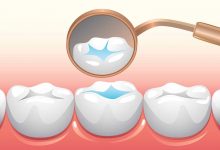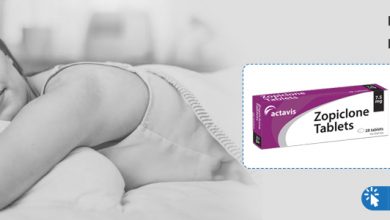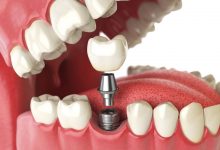Which First Aid Supplies Should You Put Into Your At-Home Kit?

Picture this: You finally have some time to prepare a home-cooked meal for the first time all week. You decide to try your hand at making your own french fries. (That air fryer won’t break itself in, after all.) So, you set to work peeling your potatoes and chopping them.
While you’re in the middle of cutting your potatoes, you feel a sharp pain on your finger, look down, and there’s blood everywhere. The cut thankfully isn’t serious enough to warrant immediate emergency attention. However, you still need to staunch the bleeding ASAP.
First aid supplies are crucial for this and many other small disasters. If you’re not sure what you should keep in your home’s first aid kit, read on, and we’ll cover the basics!
Bandages, Bandages, and More Bandages
Our introductory example shows one supply that any first aid kit should have in abundance: bandages. We don’t just mean standard fabric or plastic band-aids. We mean bandages designed for large injuries, small injuries, and fingertips.
This also includes having a roll of bandages and a tourniquet ready in the event that you have a more severe injury. Let’s say that the kitchen knife’s cut went a little deeper than expected and you need a compress for your wounds. Not having those first aid supplies around when you need them could be the difference between life and death.
Bandages should also include ACE bandages to help you wrap a strain, sprain, or break. This can hold the injured area in place for long enough to receive medical attention without risking motion causing further damage.
Infection Prevention
Of course, you can’t start tending to an injury without something to help clean the injured area first. That’s why your medical supplies should always include alcohol wipes, hydrogen peroxide, and antiseptic ointments. Alcohol wipes and hydrogen peroxide will burn like crazy when placed near an open wound but can help you clear it out before you apply a bandage.
So, what could happen if you apply a band-aid, but don’t use anything to clean the wound first? You could potentially give bacteria infecting the wound a warm, moist, sealed-off area in which to reproduce. This can lead to serious health consequences, even death if left untreated.
Make sure you always clean the wound site before you start dressing it, and keep the tools to do so among your first aid supplies.
Burn Treatment
Burns are an extremely common form of household injury. While you can treat most minor burns with a simple application of cold water, in more moderate to severe cases, you could need an ointment. Even if you don’t keep some type of burn treatment on hand for kitchen-related injuries, you should have one to help you recover in the event of sunburn. Especially during the summer months.
Common Illness Treatments
How many times have you found yourself dealing with a splitting headache, only to pry open your medicine cabinet and find out that you’re out of painkillers? Or started suffering from seasonal allergies with not a single antihistamine in sight? Or doubled over from menstrual cramps with no Midol or Pamprin to be found?
There is a host of minor to moderate illnesses that we deal with that don’t necessarily need a doctor’s care. So, any first aid kit that you have in your home should have the medicines used to treat most of these common maladies. Some good medicines to keep on hand include, but are not limited to:
- Painkillers, for anything from headaches to muscular pain
- Antihistamines, especially if you tend to suffer from seasonal allergies
- Heartburn and upset stomach treatments
- Anti-nausea and anti-diarrhea medications
You, your family, and your guests will thank you for having these crucial tools available when the need for them strikes. Preparation is a solid chunk of first aid, after all.
Handling Bug Bites
Your first-aid supplies should also contain a way to handle bug bites, rashes, or stings. While most of these are more itchy and annoying than they are dangerous, they can cause their own fair share of misery. Just ask anyone who’s ever inadvertently walked through poison ivy or a fire ants’ nest.
First Aid Supplies Should Include PPE
If there’s one thing that the coronavirus pandemic has hammered home, it’s the need for personal protective equipment or PPE. Even when there’s not a global pandemic posing a serious threat, you need to have PPE in your first aid kit. It’s as much to protect yourself as the person you’re treating.
Some common pieces of PPE that all first aid supply kits should include are:
- Disposable gloves, especially when dealing with open wounds or bodily fluids
- A surgical mask to prevent the transmission of airborne pathogens
- Tweezers, in case you need to dig deep into a cut and remove splinters or stingers
By using this PPE during the treatment, you can protect yourself and the person you’re trying to treat from infection and other serious complications.
Don’t Forget Your Personal Prescriptions
If you suffer from any diseases that require specific medications given during an emergent situation, make sure those prescriptions are in your first aid kit. After all, you can’t count on having full command of your body or your speech during an emergency, and a stranger might not know which prescription bottle to grab to help you. So, make sure you have a dose of any emergency prescriptions prepared and clearly labeled.
What Medical Supplies Should Be In Your First Aid Kit? Let’s Review
Figuring out what first aid supplies should go in your home kit can be tricky. However, if there is one takeaway we hope you have from this piece, it is that it’s better to have something in your first aid kit and not need it than it is to need it and not have it.
If you’re still looking for guidance on treating common maladies and injuries at home, check out the Health section of our blog. We update each day with more helpful articles like this one!













